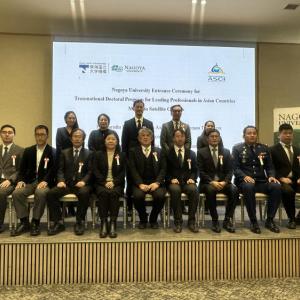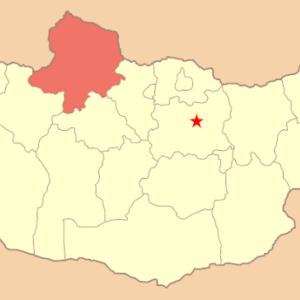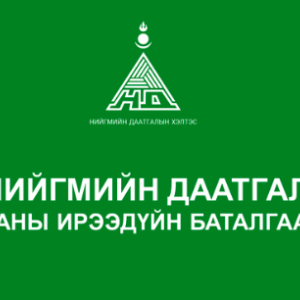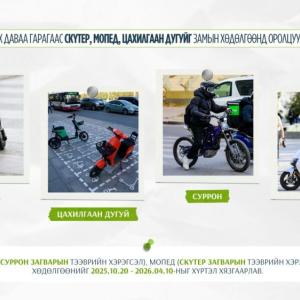Shannon Stowell: There is a Huge Opportunity to Promote Mongolia to International Tour Operators
Society
Ulaanbaatar, November 24, 2023 /MONTSAME. An interview with Shannon Stowell, CEO of Adventure Travel
Trade Association
- Could you tell us the purpose of your visit? What are the
possibilities of cooperation between the Adventure Travel Trade Association (ATTA)
and Mongolia?
-Firstly, I would like to express gratitude to the
Government of Mongolia and the Minister of Environment and Tourism of Mongolia
Bat-Erdene Bat-Ulzii for successfully organizing the "Years to Visit
Mongolia" to develop tourism. I'm interested in learning the role and
impact of adventure tourism on nature conservation as part of the Sustainable
funding program for nature conservation jointly carried out by the
Ministry of Environment and Tourism of Mongolia and the Nature Conservancy
(TNC) NGO. A classic conservation approach of adventure tourism focuses on locals, in other
words, it is community-based. Adventure tourism
plays an important role in supporting the economy by adding value to natural
resources and it is comprised of nature and culture with vigorous activities as
complex. In this sense, adventure tourism benefits the local people and the
local economy much greater than mass tourism.
-What makes adventure tourism different from mass tourism?
According to a study conducted a few years ago, the
benefits from mass tourism for local communities make up 15 percent of the
total money spent there, while adventure travelers spend 70 percent for locals.
Adventure tourists stay at local inns, eat in local restaurants, and buy local
goods investing in the local economy. Before the pandemic, in 2019, the
pharmaceutical supply market was valued at USD 630 billion, and the adventure
tourism market has grown much larger than that. Therefore, we requested funding
from the World Bank for new research. As Asian countries are new players in the
adventure tourism market, funding is likely to increase.
- Adventure tourism is new for Mongolia, but I think
Mongolia has the potential to develop adventure tourism using its unique
nomadic culture and abundant natural resources. What does adventure tourism
provide? What are the advantages of Mongolia, what makes Mongolia an
adventurous destination?
- There are three leading profitable products in the
world's adventure tourism market - walking, cycling, and trekking.
This is the best pleasure and opportunity to cross the
country on foot or by bicycle. In this sense, I think there is a lot of
opportunity to promote Mongolia among international traders, tour operators,
and large companies.
-As the Mongolian Government declared 2023-2025
the "Years to Visit Mongolia," many celebrities from many countries
visited Mongolia last summer. How we can attract more adventure travelers to
Mongolia?
-I arrived in Mongolia to find the answer. The ATTA has
many member tour operators and media representatives. We provide professional
support for the improvement of adventure tourism products and bring the media
staff to a particular country. Besides, we visit the destinations and study
what should be explored and what media channels should be used to promote it.
Once this is studied, it will open doors for international wholesalers and
media advertising.
- I suppose, adventure travelers are attracted to challenging, complex, novel journeys, and they feel pleasure and energy accordingly. What is the main criterion for choosing a destination for them?
-In the past, well-traveled and experienced tourists were
interested in adventure. A hundred years ago adventurers traveled to enjoy the
natural beauty of countries, but over the past 20 years, the interest and
nature of the adventure tourism market has changed. Today they are more
interested in national culture and people you meet. When tourists come to
Mongolia to see the nature, plains, and wild animals, the main thing that makes
the trip unique is meeting and interacting with the people and locals. I have a
wish to learn more about Mongolia's culture to enrich its tourism products. For
us, we are more interested in human-oriented products. Looking at the plains
and nature of Mongolia, I assume there is a competitive product for the tourism
market. However, more detailed information is not yet available.
-How adventure tourism products have changed over the past
20 years of your experience?
- I had perceived adventure travel must be risky and could
not always achieve that.
Discovering uncharted land and challenging yourself may be,
used to make the adventure travel more attractive and appealing. However, the
situation is changing and the scope of adventure tourism is expanding. For
example, for some people, visiting a country where the native language is not
English and experiencing a different culture and way of life can be an
adventure. Over the past 20 years, the concept of tourism has expanded,
products have diversified, and many alternative forms of tourism have emerged.
There are opportunities to involve a wider population. In the past, tourism was
focused more on material issues, but now tourists are more interested in
culture and building bonds with local people.
-Mongolia has many big rivers with strong streams and high
mountains and there are many experienced guides and teams. Could you share some
of good examples of how to assess risk for adventure travel?
- Training reference standards on how to properly manage
risk according to ISO were first developed eight years ago, Today, for instance
in Okinawa, Japan, tour guides are trained in risk management, and adventure
tour products have been improved. Adventure travel is about challenging
yourself and enjoying activities that often require physical fitness and
stamina. Such a wonderful journey can become dangerous if the risks are not
mitigated. Minimizing risks in adventure travel must be fundamental for all travel
companies, along with offering inspiring, challenging, and fascinating tours.
For example, it is extremely dangerous to have a ride on an inflatable boat in
a fast mountain river without a guide or proper risk management. Therefore,
there must be guidance that can reduce the risk. We prepare product safety
guides and training manuals in all areas and conduct training.
-Mongolia has a large territory and is sparsely populated.
How to overcome the risks such as lack of emergency service and communication
when traveling to remote areas?
- When visiting a country, our team makes a risk management
plan after conducting a risk assessment. For example, it would be very
irresponsible if a tour operator allowed a tourist with minimal experience of
horse riding to gallop. When riding a horse, it is necessary to ensure safety,
such as choosing a gentle and tamed horse and at least wearing a safety helmet.
Of course, it is impossible to eliminate all risks, but we can evaluate and make
a plan for potential risks, and train our people.
Additionally, the course and decisions should be produced
in consultation with locals and guides. Being aware of the local culture,
knowledge, and mentality is very important. For example, in Brazil, there are
swamps and ponds where piranhas live. When developing our tours, we
consult with locals who know when piranhas are away, when it is safe to swim,
and when it is not, so together with international trainers we solve the
problem and make adventure tourism products risk-free. Recently, tour operators
have begun to offer insurance for helicopter services, especially in remote
areas. Assuming an average adventure traveler spends USD 3,000 on a ten-day
trip, an extra 10 percent can help reduce the risk of a long-distance trip.
-Influencers tend to take perilous journeys and actions to
increase the number of their followers. There are many sad cases of tragic
deaths. What are the ways to minimize the risk?
-This is a problem today. The ATTA, as a professional
association, has different standards. Such risky, reckless, unethical, illegal,
unlawful, or disrespectful behavior is never supported. It is wrong to take a
photo of yourself wearing shorts and jumping in the air when you are in a
mosque. Our requirements and ethics are on a different level. We value influencers
whose followers are ethical and decent. Our influencers who are ethical
themselves and have few but loyal followers benefit locals because they share
their experiences about the culture and nature of the places they travel to.
-How many countries does ATTA operate in?
-We have been operating in more than one hundred countries.
We have our teams in 10 countries. We organize 20-40 courses a year and we
conduct activities at a global scale. Over a month ago, the SDSN Hong Kong held
its first "Global Conference on Sustainable Development" (GCSD 2023)
in Asia. More than 800 international representatives attended and we exchanged
views on tourism sustainability, challenges, and what tour agencies can offer
depending on the country. During the Conference, I met with representatives of
the Mongolian companies, but we could not discuss the issue in detail. While I
am in Ulaanbaatar, I am interested in opening up a market to "sell"
and promote Mongolia. We want to expand the sale and promotion of the Mongolian
affiliates' products in our tour agencies. There are travel agencies to provide
information about Mongolia in case the public is not well-informed.
 Ulaanbaatar
Ulaanbaatar













































































